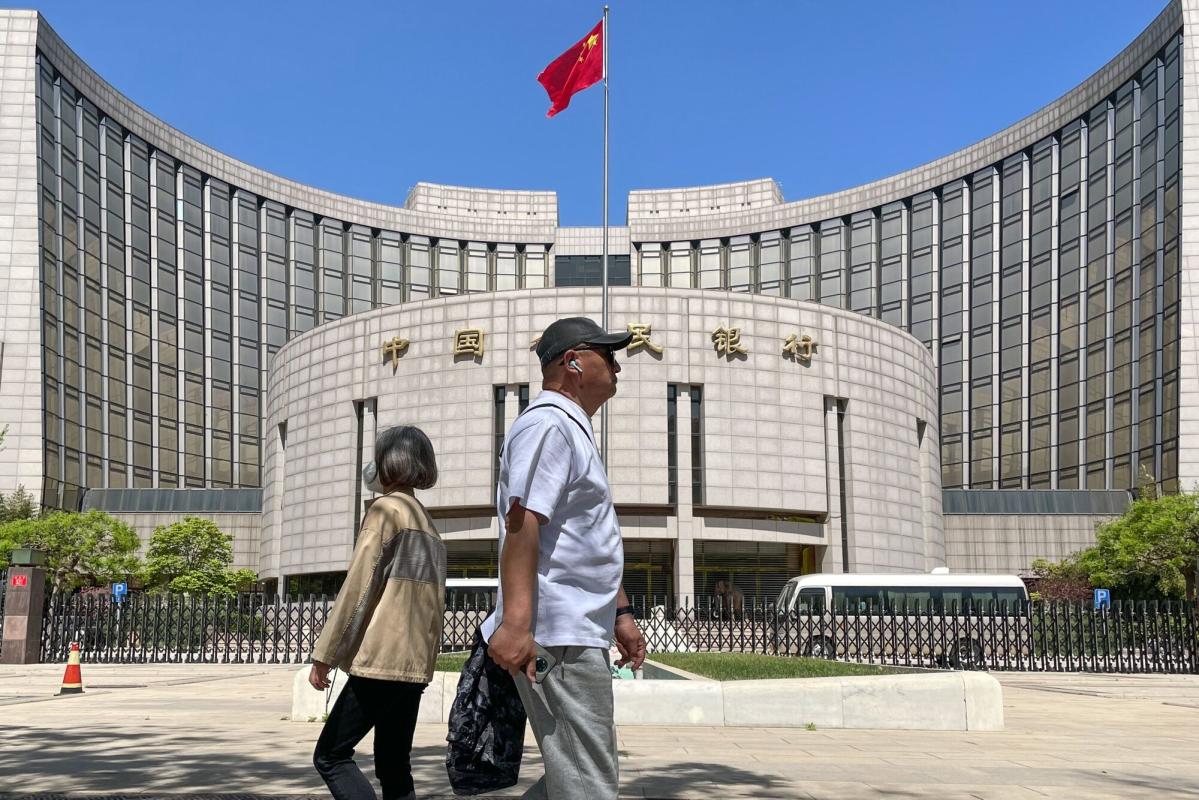(Bloomberg) — China’s central bank unexpectedly cut its key interest rate by the most since 2020 to prop up an economy that faces new risks from deteriorating real estate and weak consumer spending.
Most Read from Bloomberg
The People’s Bank of China cut the interest rate on its one-year loans – or medium-term lending facility – by 15 basis points to 2.5% on Tuesday, the second cut since June. All but one of the 15 analysts surveyed by Bloomberg predicted that the price would remain unchanged. The short-term interest rate was also cut by 10 basis points.
The surprise move came shortly before the release of disappointing economic activity data for July showing growth in consumer spending, industrial production, investment across the board, and a rebound in unemployment.
The National Bureau of Statistics said that domestic demand remains “insufficient” and “the basis for the economy’s recovery still needs to be consolidated.” China needs to “step up macroeconomic policy adjustment and focus on expanding domestic demand, raising confidence and preventing risks,” the NBS said in a statement.
The interest rate cut boosted government bonds and weighed on the exchange rate. China’s 10-year yield fell seven basis points to 2.56%, its lowest level since 2020. The local yuan fell for a fourth session on Tuesday, declining 0.23% to 7.2744 per dollar as of 11:32 a.m. in Shanghai.
The PBOC’s move was the first under new governor Pan Gongsheng, a former deputy at the People’s Bank of China who was promoted last month after Yi Gang’s retirement. There has been a slew of bad economic news since Ban took office, with data last week showing bank loans fell to a 14-year low in July, as the downturn began and exports contracted further.
The sudden policy move signals growing concern from policymakers about deteriorating prospects, particularly in the real estate market, where another major real estate developer is now facing a debt crisis and home sales continue to decline. Risks also spread to the financial sector, as one of the subsidiaries of a major financial group, which was exposed to the real estate sector, defaulted on payments on some investment products.
China’s economic problems are spreading to the rest of the world and worrying global policymakers. US Treasury Secretary Janet Yellen said the Chinese slowdown was a “risk factor” for the US economy, though the impact would be greater for Asian neighbors. President Joe Biden told a fundraiser last week that China’s economic problems were a “time bomb” for the country.
Beijing has faced more calls to add monetary and fiscal stimulus to support the economy since the pro-growth tilt by the Communist Party’s Politburo in July. One central bank adviser has called for direct consumer support to help boost spending, an approach senior officials have so far been reluctant to take.
What Bloomberg tells the economy…
Activity data in China shows the economy is rolling into the second half of the year – an obvious reason for Tuesday’s unusually fast and large interest rate cut. The output, investment and consumption readings are all below the level forecasts, showing that the June rate cut did not move the dial.
David Chu and Chang Shu
To view the full report, click here.
The July Politburo emphasized very clearly that China will step up counter-cyclical support measures. Today’s decision was the first concrete step in this direction, said Carlos Casanova, chief Asian economist at Union Bancaire Privee. The People’s Bank of China (PBOC) is also expected to lower the reserve requirement ratio for banks next time around.
China’s central bank easing measures will add more pressure on the yuan, which has fallen to its weakest level since November as the economy’s growth prospects dim. As the Federal Reserve continues to raise interest rates to tame inflation, the yield gap between Chinese and US 10-year government bonds is now more than 160 basis points, the largest since 2007, fueling capital outflows.
NBS data showed that consumer spending on services, such as dining out, remained strong, while spending on goods, such as clothing, cosmetics, jewelry and home electronics, weakened significantly.
Low prices may also have contributed to the weak consumer goods numbers, said Helen Qiao, chief economist for Greater China at Bank of America.
“Going back to July, I think consumer services were thriving,” she said in an interview with Bloomberg Television. “Look at the box office—record all the time—look at transport and accommodation, that was fine. But maybe consumer product sales weren’t very good, compounded by the fact that it’s a nominal chain and your CPI inflation was very low, probably That would have contributed to a very low number.”
Industrial production may have been affected by heavy rains and severe flooding in some parts of the country last month. Fixed investment for private companies shrank 0.5% in January-July from a year earlier, a sign of weakening confidence.
Tuesday’s data “shows just how difficult it is to sail against the wind, with challenges on almost all dimensions and active policy support from a few fronts,” said Bruce Pang, chief economist for Greater China at Jones Lang LaSalle.
– With assistance from Paul Dobson, Jing Zhao, Wenjin Love, Jill Desis, James Maiger, Jing Li, and Carrie Lindberg.
(Updates with additional details.)
Most Read from Bloomberg Businessweek
© 2023 Bloomberg LP
